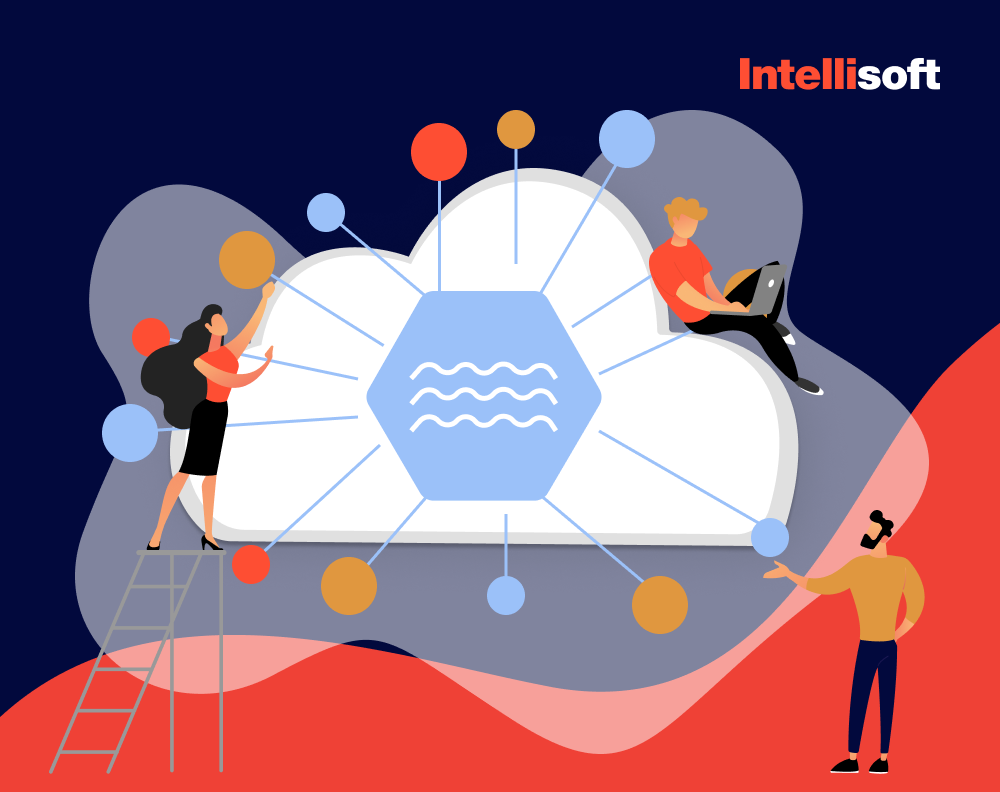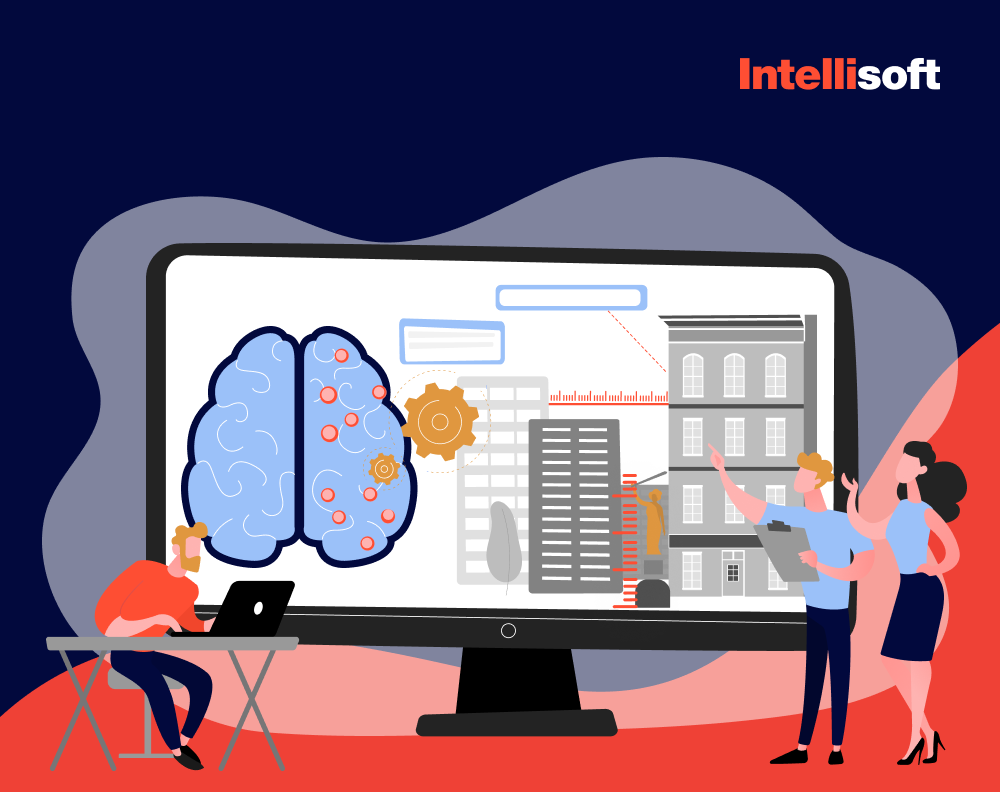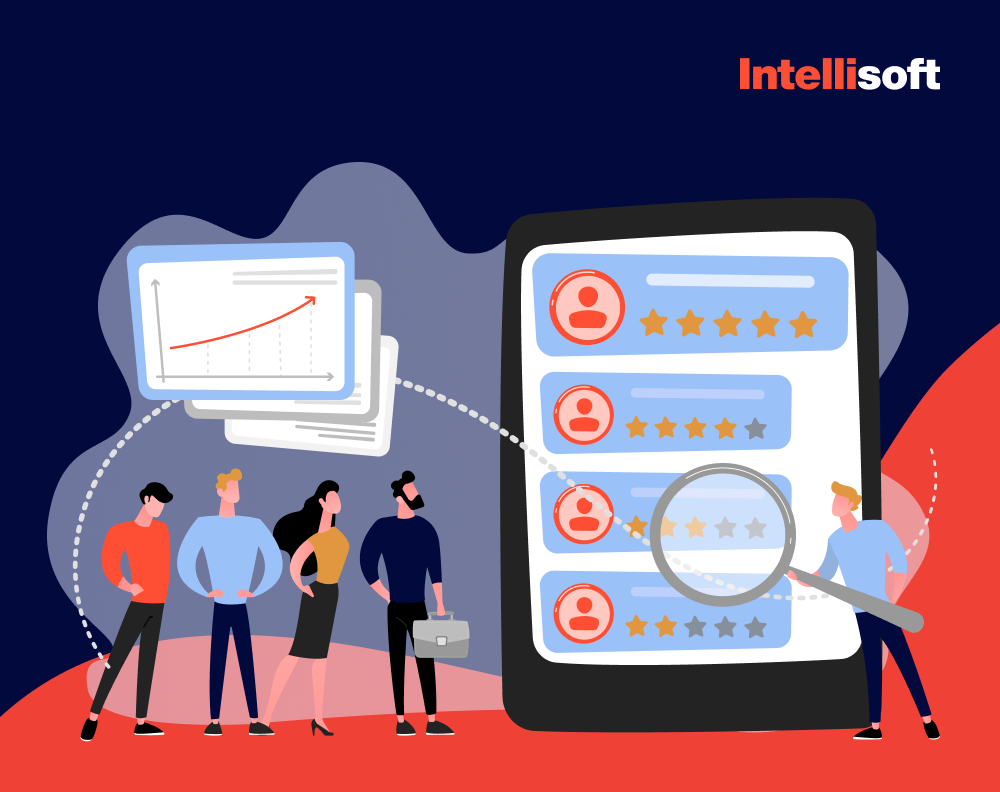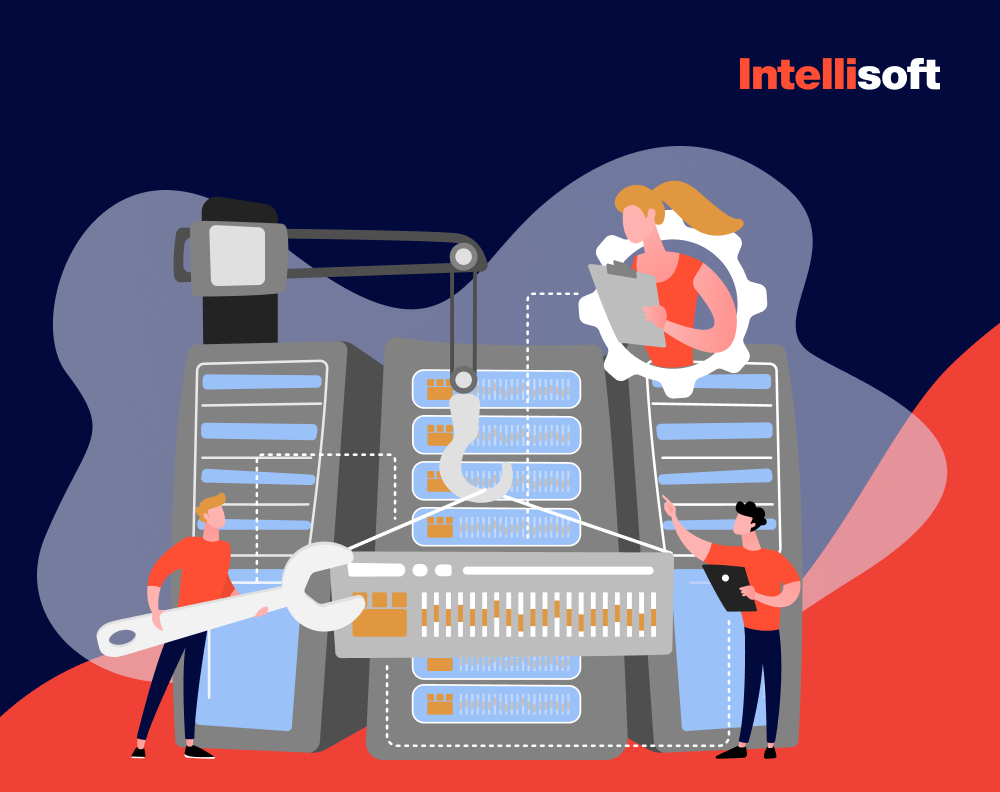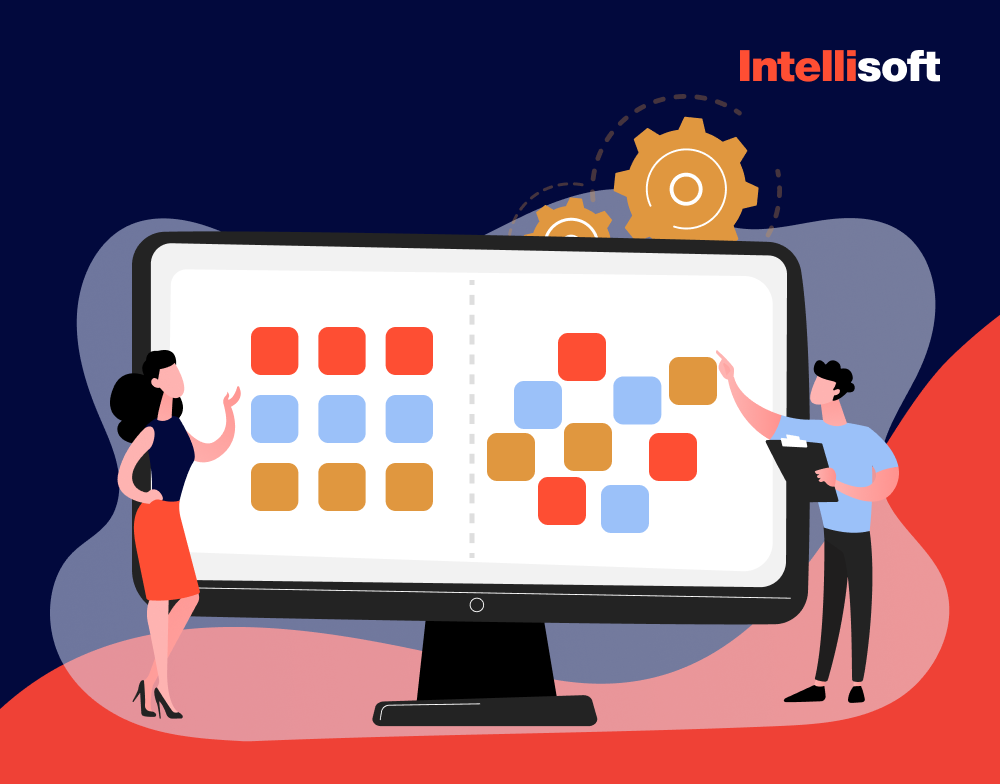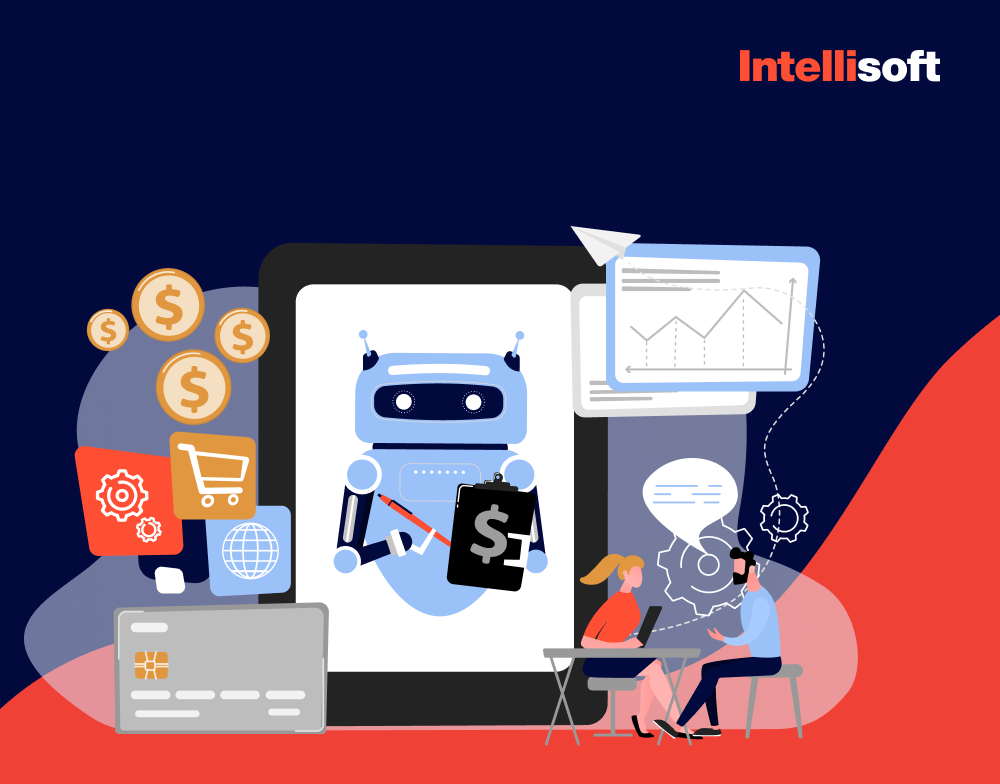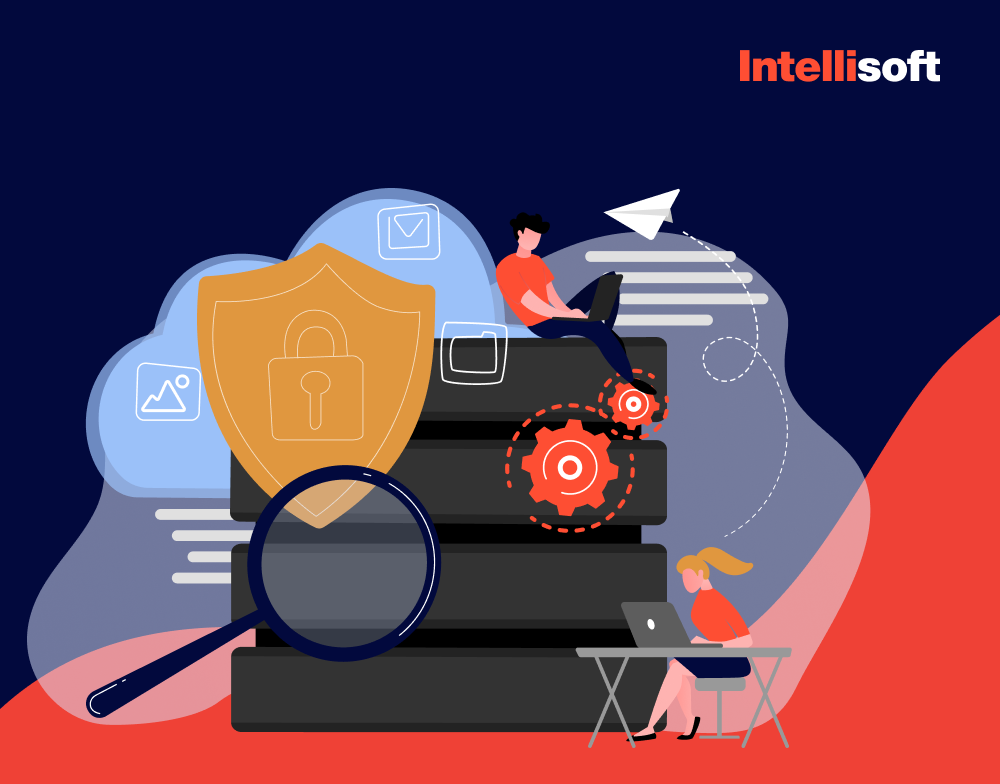If you want to make right, insight-driven decisions, swiftly analyzing and deriving significant information from large information sets is essential. What is data mining? It’s a technique that pushes us beyond basic statistics to predictive and prescriptive analytics. Why is data mining useful? This move transforms information into a crucial competitive advantage.
Data mining definition is a fascinating concept that allows us to turn extensive raw information into valuable insights. These insights can dramatically transform business operations. At IntelliSoft, we excel in leveraging data to identify patterns, forecast trends, and offer data mining solutions that help make informed strategic decisions and spur business growth.
With our years of experience in developing advanced software solutions, IntelliSoft stands ready to help you navigate the complexities of data mining meaning. We wrote this article to explain what is data mining with examples, how it functions, why use data mining, and why it is a vital tool for your business. Let’s explore the potential of your data together.
Table of Contents
What’s Data Mining?
Data mining definition is a sophisticated analytical technique to identify important patterns, relationships, and anomalies hidden within large datasets. A firm would use data mining if it wanted to apply advanced statistical analysis and machine learning techniques to sift through and analyze vast amounts of information, extracting actionable insights. These insights are invaluable for businesses, as they form the basis for informed decision-making, trend forecasting, and the refinement of business strategies.
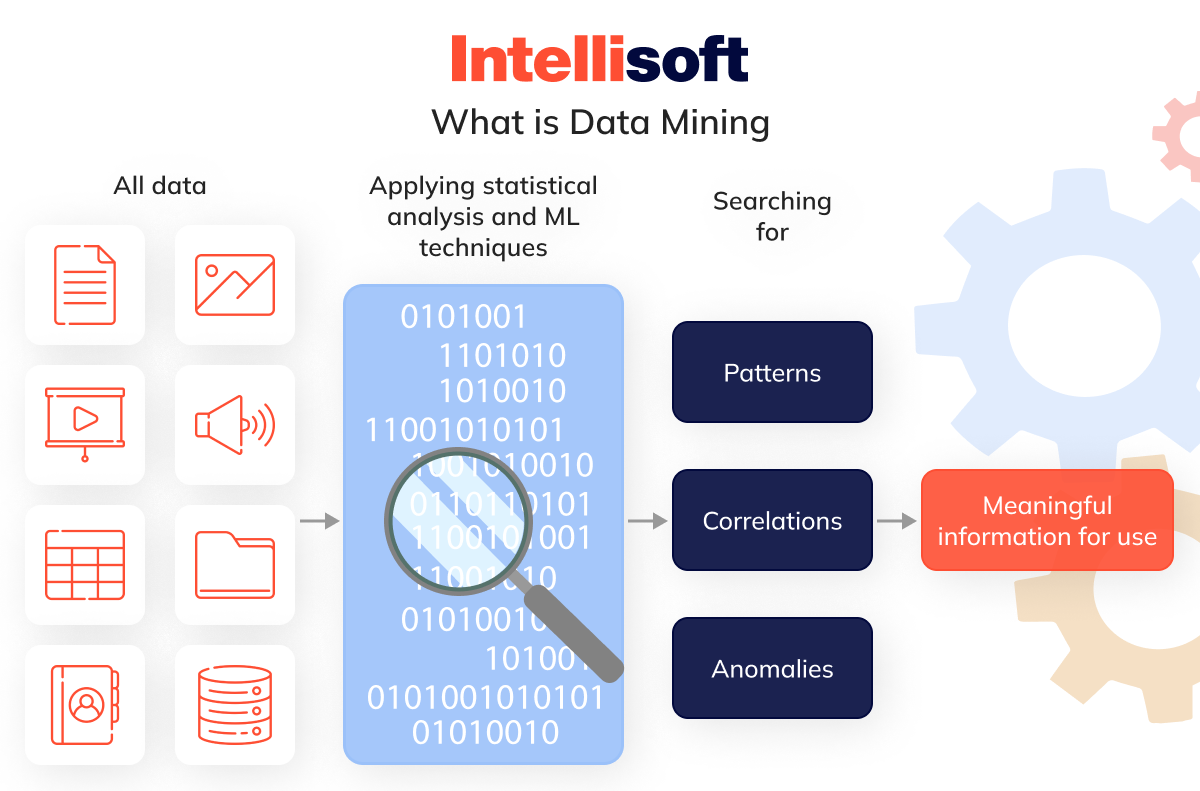
Take the example of how to data mine for a travel company analyzing patterns in customer bookings. Through big data mining, the company might find that solo travelers frequently choose hotels near tech hubs or co-working spaces instead of typical tourist spots. This insight suggests that many solo travelers blend work with pleasure and seek amenities that facilitate their professional needs. With this knowledge, the travel company could focus its marketing efforts on promoting hotels offering business-friendly amenities, such as business centers or locations close to major business districts.
This scenario demonstrates that data mining, the tool used to identify patterns in data, is indispensable. It enables businesses to leverage these insights to optimize their operations and marketing strategies. This optimization helps companies better meet their customers’ needs and take advantage of new market trends.
How Does Data Mining Work: Key Steps of the Data Mining Process
To truly define data mining, we need to understand the whole process. Data mining is a technique where a company will employ a thorough process that extracts actionable insights from large datasets to support decision-making and strategic planning. The Cross Industry Standard Process for Data Mining (CRISP-DM), established in 1999, is still a widely used framework that details the structured phases of a successful pattern analysis project. Here’s an in-depth look at each stage of the CRISP-DM process:
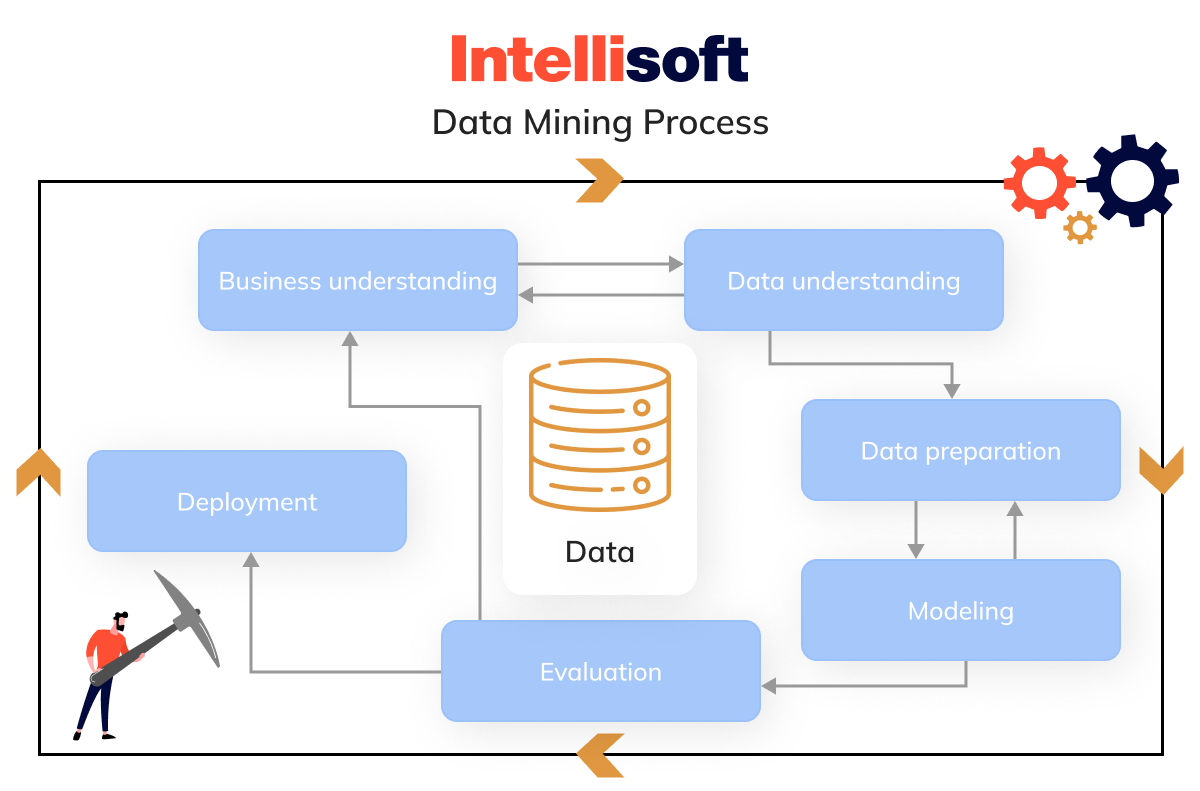
Step 1. Business Understanding
This foundational phase is essential to align the data mining company with business objectives. It involves a detailed evaluation of the business needs, defining the scope of the problem, identifying the key questions that mining data should address, and crafting a preliminary plan to address these issues. This stage determines the types of information required and the insights to be pursued.
Step 2. Data Understanding and Data Harvesting
With the business goals defined, the next step is data harvesting and becoming acquainted with the information. This phase includes pinpointing information quality issues, understanding the data’s size, nature, and preliminary patterns, and recognizing the information sources. This stage aims to build a thorough overview of the information available to support the business questions identified earlier.
Step 3. Data Preparation
Often the most labor-intensive phase, information preparation, entails cleaning and transforming raw information into a format suitable for analysis. This includes addressing missing values, correcting inconsistencies, normalizing information scales, and modifying variables. The objective is to polish the dataset for rigorous analysis.
Step 4. Modeling
Here, specialists employ various mathematical models on the prepared information to discern patterns or predict outcomes. The selection of a model, ranging from simple regression to complex algorithms like neural networks, depends on the characteristics of the information and the business objectives. Several models might be tested to discover the most effective one.
Step 5. Evaluation
Evaluation is vital for verifying the model’s accuracy, reliability, and applicability. This phase tests the model’s ability to predict or identify patterns and includes adjustments to improve its performance. The outcomes are critically assessed to ensure the model fulfills the business objectives established in the initial phase.
Step 6. Deployment
The final step involves using the insights derived from mining data to make informed business decisions or to integrate the model into business operations. This could involve anything from generating reports with recommendations to implementing an insights-driven application within the business infrastructure.
The CRISP-DM process is inherently iterative. Discoveries made in later phases might lead to revisiting earlier stages to refine methods or information handling, ensuring that the project continuously aligns with strategic business goals.
The Difference Between Data Mining and Data Warehouse
Understanding the difference between big data data mining and warehousing is crucial for comprehending how businesses make insights-driven decisions. A data warehouse is a centralized repository that stores integrated information from various sources. It facilitates data harvesting and management, optimizing it for querying and analysis. It generally consolidates information from disparate operational systems like CRM and ERP.
The main advantages of a data warehouse are enhanced information quality, protection against information loss from updates to source systems, and the capability to integrate and optimize information from multiple sources for thorough analysis.
On the other hand, mining data is the analytical process that uses sophisticated algorithms to discover patterns and extract meaningful information from the information stored in a data warehouse. It focuses on identifying correlations, trends, and anomalies that can influence strategic business decisions.
Related readings:
- Things to Know About Data Processing Agreement (DPA)
- Legal Requirements for Storing Data: Key Insights for Storing User Data
- Making Sense of Databases: How to Choose the Right One
- Big Data Security Intelligence: What You Need to Know
- Machine Learning vs Predictive Analytics: How to Choose
Types of Pattern Analysis: Key Data Mining Techniques and Methods
Data mining is divided into two principal types—predictive and descriptive. Each type provides unique insights and caters to different business needs. Some techniques are versatile enough to be used in both predictive and descriptive contexts, showcasing their adaptability.
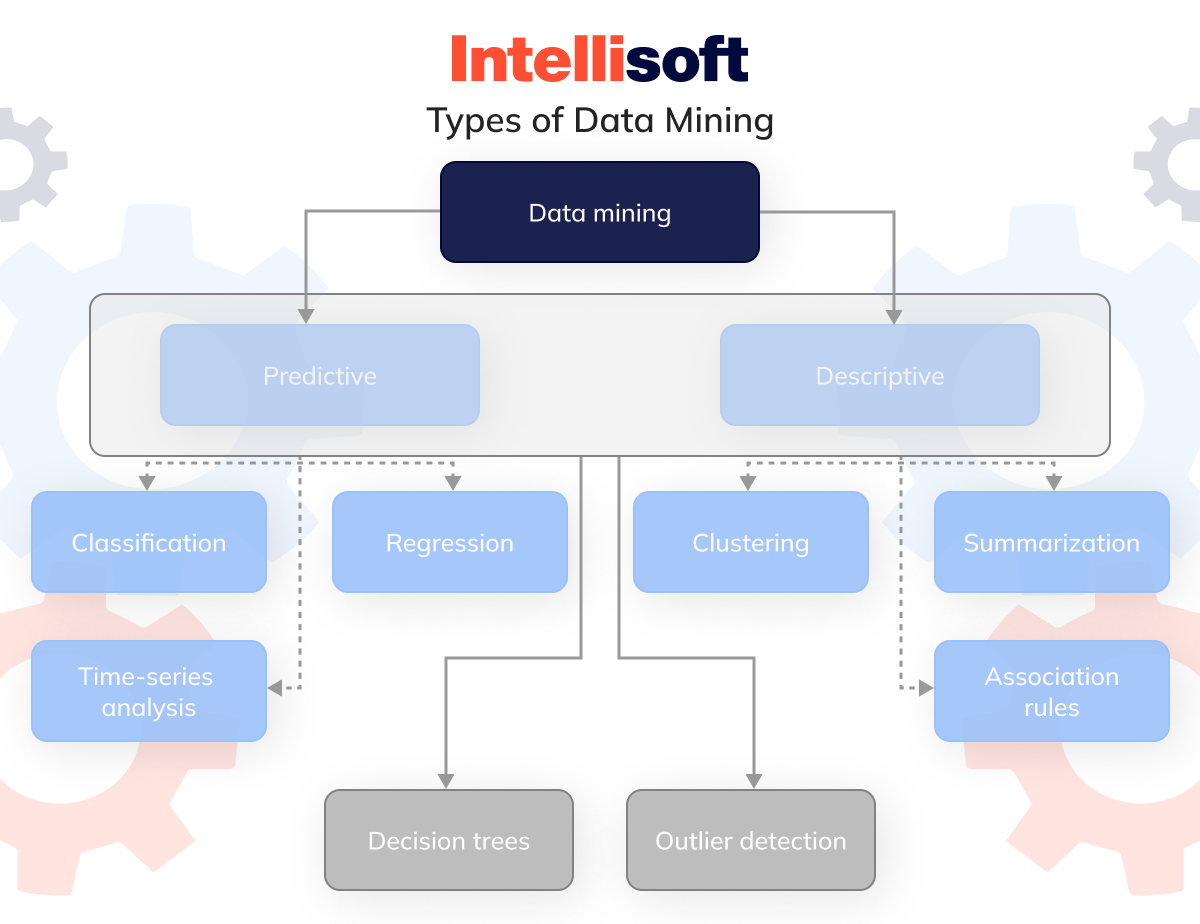
Predictive Modeling
Predictive data mining is geared towards analyzing current and historical information to predict future events. This makes software data mining an invaluable tool for forecasting trends and likely outcomes across various sectors. The primary methods used in predictive modeling include:
- Classification
- Regression
- Time-Series Analysis
The Classification method categorizes information predefined groups based on specific attributes. For instance, an airline might sort customers into groups such as frequent business travelers and occasional leisure travelers to customize marketing approaches and loyalty programs.
The Regression technique identifies relationships between variables. It is used to estimate the value of one variable based on changes in others. A typical use is in revenue forecasting, where businesses like hotels might analyze historical booking information and pricing strategies to predict future earnings.
The Time-Series Analysis approach examines information that change over time to identify trends, seasonal patterns, and cyclical behaviors. It’s particularly valuable in fields such as financial forecasting, stock market analysis, and predicting economic trends.
Descriptive Modeling
A descriptive data mining search engine provides insights into past events and helps understand information by identifying patterns, relationships, and structures. The techniques involved include:
- Clustering
- Summarization
- Association Rules
The Clustering technique is similar to classification but without predefined categories, clustering groups data points based on their inherent similarities. A retail company, for example, might use clustering to segment customers by their buying habits, which can inform targeted marketing strategies.
The Summarization method reduces insights to a manageable size while preserving essential information, aiding in creating comprehensible summaries of large datasets for reporting and decision-making.
The Association Rules technique uncovers interesting relationships between variables in large databases. A classic example is in supermarkets where analysis might reveal that customers who buy bread also frequently purchase milk, suggesting a promotional strategy to boost sales.
Dual-Use Data Mining Techniques
Some pattern analysis methods can be adapted for both predictive and descriptive purposes, offering flexibility in their data mining application.
Decision Trees models illustrate decisions and their potential consequences, including outcomes of chance events, resource costs, and utility. They are utilized in various contexts, from risk assessment in insurance to customer segmentation in marketing.
The Outlier Detection technique identifies insights points that significantly deviate from the majority. It’s essential in contexts like fraud detection, network security, and fault diagnosis. For instance, outlier detection might spot unusual patterns in transaction information that could indicate fraudulent activities.
The range of data mining techniques available equips businesses with robust tools to derive valuable insights from their information. Whether through predictive forecasting or descriptive analysis, these methods enable organizations to make informed decisions that significantly impact their strategic directions.
What is Data Mining with Examples
Software data mining serves as a transformative tool across various industries, enhancing customer engagement, refining marketing efforts, and increasing sales. Here are some impactful examples of data mining at work in different sectors:
Retail
In the retail sector, data mining is crucial for analyzing customer purchase behavior to personalize marketing strategies. A well-known example is Target, which uses big data data mining to anticipate customer needs based on their shopping patterns. In a remarkable instance, Target was able to predict a teenager’s pregnancy from her changing shopping habits, including her purchase of specific products.
This insight allowed them to send her targeted coupons for baby items before she had made her pregnancy public. Such predictive capabilities showcase how pattern analysis helps retailers deliver targeted promotions that meet customers’ evolving needs, fostering loyalty and boosting sales.
Media
Streaming giants such Netflix and Hulu heavily rely on data mining to enhance viewer experiences and produce compelling content. By analyzing vast amounts of viewer information, these platforms not only tailor recommendations based on individual preferences but also identify what makes certain shows successful.
This insights-driven approach has allowed Netflix to outpace traditional Hollywood studios by producing content that precisely meets viewer demands, securing its leadership in the entertainment industry.
Web Publishing
Companies in web publishing, such as Facebook and Google, use pattern analysis to refine advertising strategies. This technology enables highly specific ad targeting based on user behaviors and preferences online. For instance, if a user browses a retail site, they might later see ads for similar products on their Facebook feed, exemplifying effective retargeting strategies enabled by mining.
However, the application of data mining in business and sensitive areas like elections has sparked privacy concerns and calls for stricter regulations, highlighting the importance of ethical considerations in data mining company practices.
So, what is data mining with examples? These data mining examples from retail, media, and web publishing illustrate the profound influence of pattern analysis on how companies interact with customers and make informed strategic decisions based on deep insights from information.
What are the Most Popular Data Mining Tools?
The enormous amount of information generated daily presents a challenge for businesses trying to extract meaningful insights. Data mine tools are crucial for simplifying this analysis process, enabling organizations to uncover patterns that lead to valuable business decisions. Here are some of the most popular pattern analysis tools available:
RapidMiner

RapidMiner is a top-tier enterprise data mining service and data science platform known for its powerful features in model building, information engineering, and MLOps. It offers visual, drag-and-drop data mining business analytics workflows, text mining, sentiment analysis, and low-code and code-based data science options. RapidMiner excels in handling unstructured information, making it perfect for text mining from various information sources. While RapidMiner Studio has a free version for educational and research purposes, enterprise data mining solutions require direct contact for pricing.
KNIME Analytics Platform
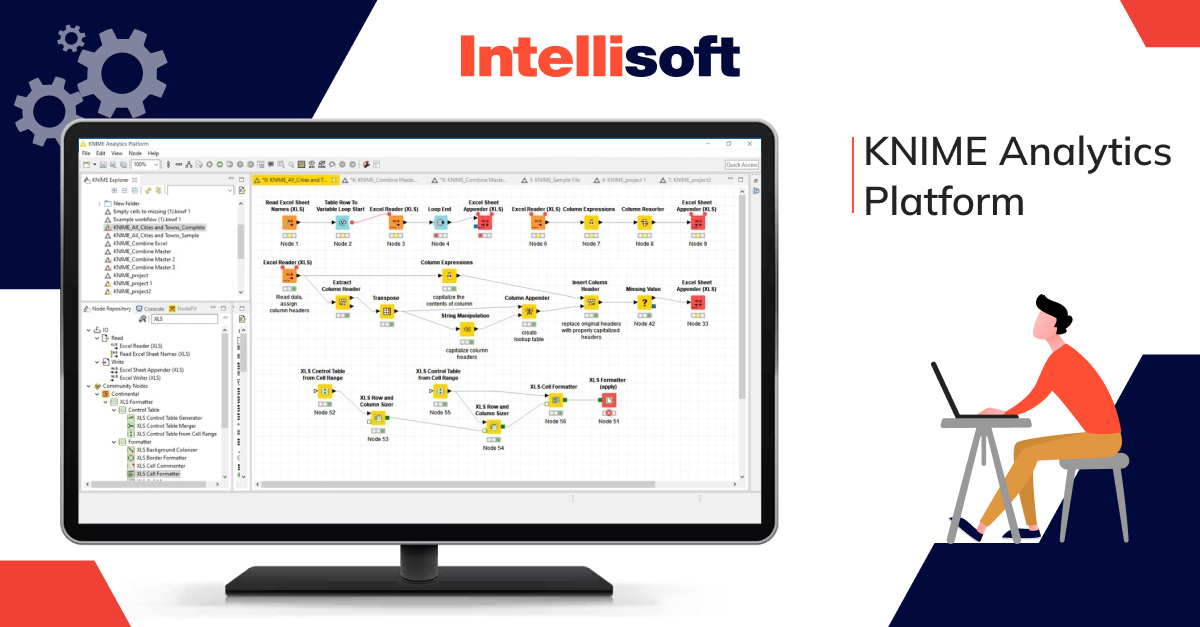
The KNIME Analytics Platform is praised for its versatility and user-friendliness, offering an open-source solution suitable for a wide range of users. It supports all file formats and includes features like task automation, spreadsheet management, and workflow segment bundling. With integrations for Python, R, and JavaScript and access to the KNIME Community Hub, it provides a comprehensive toolkit for information analysis. KNIME is free for individual users, with additional paid plans for advanced features.
Orange
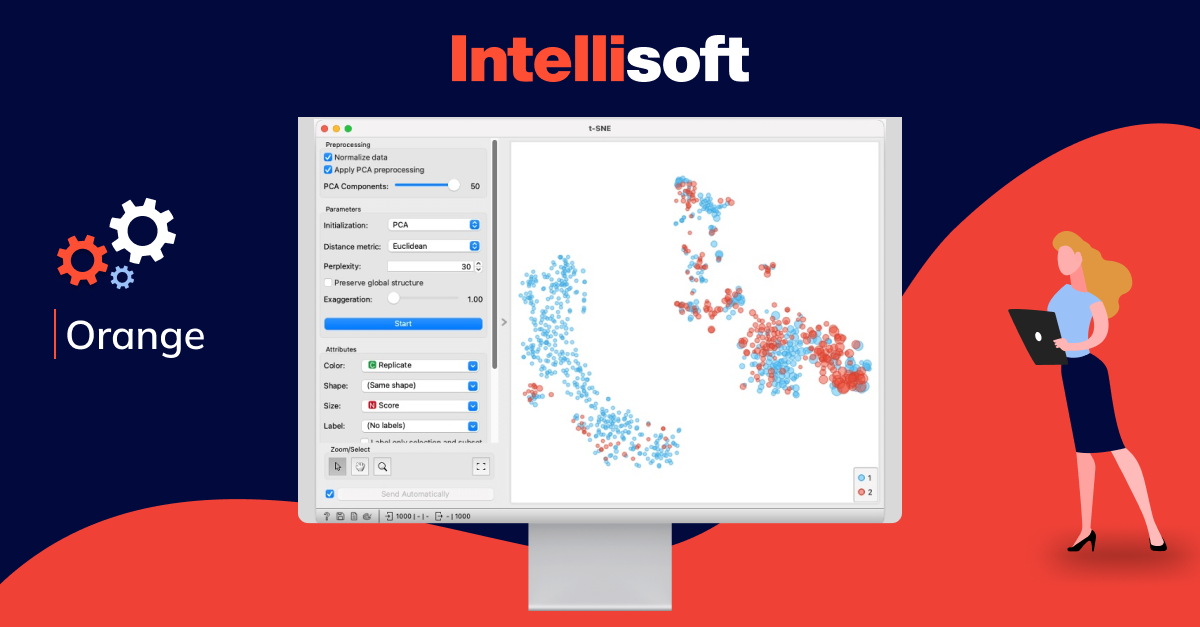
Orange is an open-source data mine tool that makes machine learning and information visualization accessible to a broad audience. It is particularly noted for its educational widgets and support for various information formats, including .xlsx, .csv, and .tab. While Orange is free and offers extensive resources for learning basic analysis and management, it might be limited to more complex enterprise data mining applications.
SAS Enterprise Miner
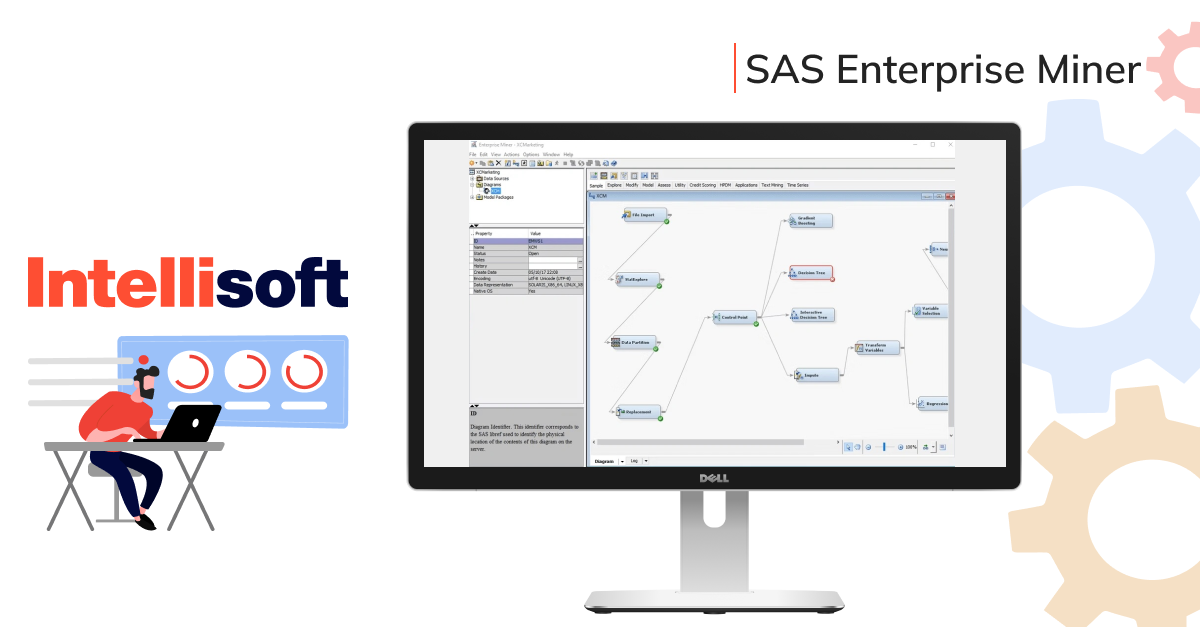
SAS Enterprise Miner is a specialized data mining solution that integrates seamlessly with other SAS technologies, such as SAS Viya. It offers a range of advanced predictive modeling techniques and tools for detailed data mining process mapping and visual assessments. Known for its scalability, SAS Enterprise Miner supports parallel processing and grid computing, making it suitable for large-scale enterprise environments. Pricing is available upon request, and SAS offers demos and trials with special pricing for educational purposes.
Oracle Data Miner
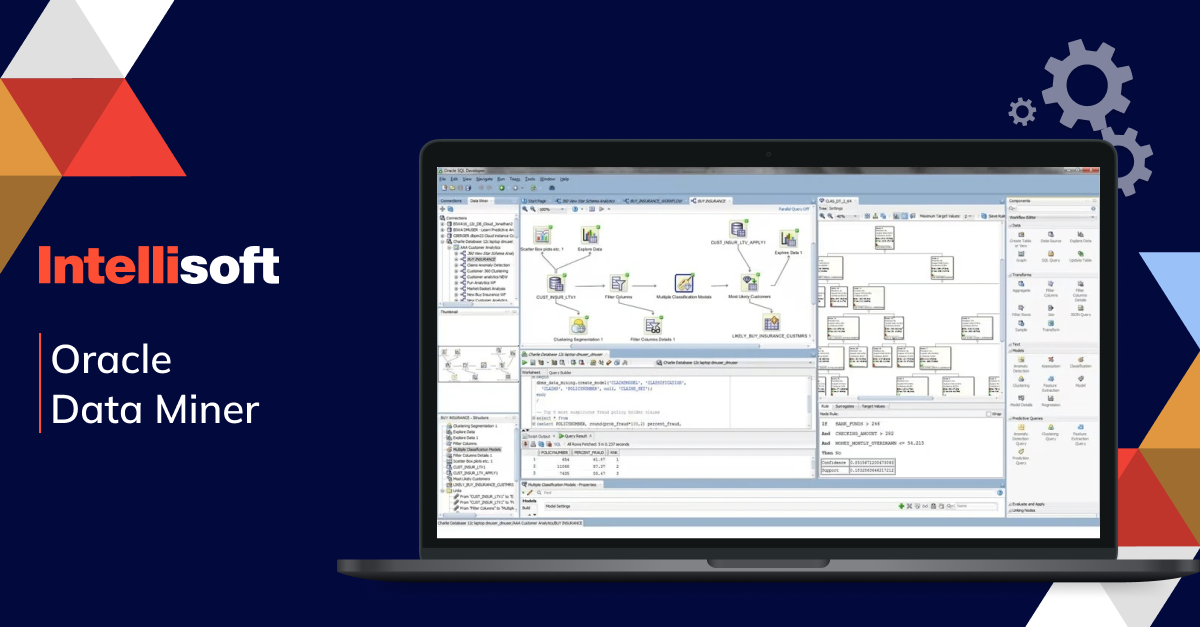
Oracle Data Miner enhances Oracle SQL Developer, providing a comprehensive information analysis toolkit based on Oracle’s database technology. It features an easy-to-use drag-and-drop interface and supports creating multiple machine-learning models with its Model Build node. Although Oracle Data Miner is free, it requires Oracle SQL Developer, which must be downloaded separately. This option is ideal for those already using Oracle’s database solutions and seeking an integrated data mining tool.
These tools represent the forefront of mining technology, offering powerful solutions to help businesses navigate the complexities of information and uncover meaningful insights.
Conclusion
Data mining has become essential for organizations across various industries, allowing them to uncover valuable insights from their vast information collections. As discussed in this article, data mining uses advanced techniques and processes, from predictive and descriptive modeling to specialized tools that simplify complex tasks. The data mining examples from retail, media, and web publishing show how mining can transform business strategies and enhance customer engagement.
For businesses aiming to harness these capabilities, selecting the right tools and understanding the methodologies involved are crucial. Available data mine software solutions offer diverse functionalities tailored to different technical needs and organizational scales, enabling businesses to perform detailed analyses and make insights-driven decisions.
At IntelliSoft, we understand the transformative power of data analytics and are dedicated to helping businesses tap into this potential. Our comprehensive data analytics services can support your data mining efforts at every stage, from initial information understanding and preparation to modeling, evaluation, and deployment. Contact us, and we will help you turn your information into actionable insights that drive your business forward.


